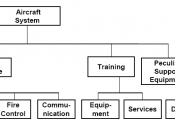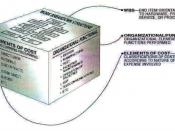1.0 Introduction to the Structure of a WBS
A Work Breakdown Structure or Work Element Pyramid is a results-oriented family tree that captures all the work of a project in an organized way. It is often portrayed graphically as a hierarchical tree, however outlined; it should organize and define the scope of the project. It can also be a tabular list of "elements" categories and tasks or the indented task list that appears in your Gantt chart schedule. Listed below is a very simple illustration of a WBS tree of a sample project.
WBS Tree
1.0 Level 1 (Total Job)
1.1, 1.2, 1.3 Level 2 (Major Subdivision)
1.1.1, 1.1.2, 1.1.3 Level 3 (Minor Subdivisions)
1.1.1.1, 1.1.1.2, 1.1.1.3 Level 4 (Tasks)
1.1.1.1.1, 1.1.1.1.2, 1.1.1.1.3 Level 5 (Subtasks)
The WBS chart listed above is an example but not inclusive. Large, complex projects are organized and comprehended by breaking them into progressively smaller pieces until they are a collection of defined "work packages" that may include a number of tasks.
A $1,000,000,000 project is simply several $50,000 projects joined together. The Work Breakdown Structure (WBS) is used to provide the framework for organizing and managing the work and most importantly tying resources to jobs and tracking the performance of the efforts. In planning a project, it is normal to become overwhelmed and confused as one begins to grasp the details and scope of even a modest size project. This is a common result when trying to understand the details of work that will be performed by a number of people over a period of time. The best way to break through the confusion is to break the project into smaller pieces (tasks and subtasks), and organize the pieces in a logical way using a WBS. The WBS format enables placement of the tasks...



Great
Very useful , I have a better understanding of WBS and that too at the right time as I was studying Project Management and didn't like the definition given to me by my professor.Thanks a lot!
0 out of 1 people found this comment useful.